
Well worth reading between the lines.
Socom Officials Work on Plan for Global Network
By Donna Miles
American Forces Press Service
MACDILL AIR FORCE BASE, Fla., June 3, 2013 – About 100 people are hard at work at the U.S. Special Operations Command headquarters here on a new plan that will operationalize the way the command provides manpower and capability in support of the new defense strategic guidance.
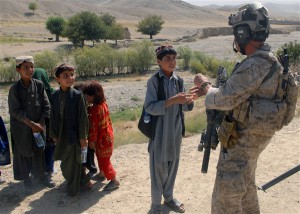
The plan, due to the Joint Staff in late August, is part of the Special Operations Command 2020 vision Navy Adm. William H. McRaven introduced shortly after taking the helm as Socom commander in 2011.The building of a global network of special operations forces, as well as U.S. government partners and partner nations, is a major component of Socom 2020, McRaven explained during the Special Operations Forces Industry Conference in Tampa, Fla., earlier this month.
McRaven’s Socom 2020 vision calls for a globally networked force of special operations forces, interagency representatives, allies and partners, with aligned structures processes and authorities to enable its operations. Globally networked forces, he said, will provide geographic combatant commanders and chiefs of mission with an unprecedented unity of effort and an enhance ability to respond to regional contingencies and threats to stability.
McRaven noted his own experience working with the Joint Special Operations Command in Afghanistan. “It has been interesting to work in a network like that, and we do that very, very well on the direct action side,” he said. “We need to figure out — and it is part of the Socom plan — how do we take that network, and be able to extend that out to the theater special operations commands,” down to special operations forward elements and forces assigned to them.
Working toward that vision, the Socom staff is hard at work on what is expected to serve as a blueprint for special operations forces activities around the globe in light of the new guidance, explained Army Col. Stuart Bradin, who is leading the operational planning team.
With a renewed focus on the Asia-Pacific region as well as the Middle East, the new strategy calls for military operations that more closely mirror those special operations forces have conducted since their inception, Bradin noted.
The strategy advocates smaller-scale operations and activities coordinated with not only with partner nations and militaries, but also with the U.S. interagency community. The focus will be on preventing major conflict before it happens, largely by building partner capacity.
“We are going to go out in small footprints and work with key partners to ensure that small regional issues don’t become major theater operations,” Bradin said. “We can’t afford that in blood or treasure.”
The planning effort underway here is examining what special operations missions should be conducted, and where, in support of the strategy, Bradin said.
For the past 12 years, the intensive demand for special operations forces in Iraq and Afghanistan left minimal capability to support other parts of the globe. Those engagements, when they occurred, typically were linked to short-term exercises and training events. But with wartime requirements expected to reduce, McRaven said, he hopes to provide better support for all of the theater special operations commanders and the geographic combatant commanders they serve.
Rather than posturing capability to counter specific threats — a calculation that historically has rarely been accurate — McRaven wants to posture it with the combatant commanders.
“They are the employers of [special operations forces],” Bradin said. “So he wants to give them enough special operations capability that they have it at their ready disposal and can use it in their geographic [area of responsibility].
The first step in formulating the plan was to bring the theater special operations commanders together in April 2012 to identify their top priorities for support. They reported what top three activities they wanted, at what locations, with what level of manpower and for how long, to achieve what objectives, Bradin said.
As part of the report, the theater special operations commanders ensured their recommendations were coordinated through the respective chiefs of mission and tied into the theater’s country campaign plan.
“At the end of the day, this allowed us to enumerate all our operational requirements, which is huge,” Bradin said.
The geographic combatant commanders validated the requirements two months later, both in writing and during a video teleconference.
The Joint Staff then gave Socom 120 days to turn the requests into a single, unified plan. That sent Bradin and his planning team back to the drawing board to come up with something never before formulated in Socom’s history: a comprehensive, global special operations forces planning document that matches resources to need.
“This will be a huge plan,” Bradin said. “It will synchronize the planning, the deployment and the posture of all these special operations forces in support of the geographic combatant commands. … It demonstrates how we intend to align forces to those requirements.”
Once implemented, the plan is expected to provide a framework for more comprehensive and more regular special operations forces engagements in more parts of the world, Bradin said.
“A lot of what we have done in the past, because of necessity, has been very episodic,” he said, often too infrequent and short-term for operators to build strong relationships with partners. “So I think that with the plan in effect, you will see smaller groups [of operators] with more persistent engagement in those areas. By aligning the forces, you will see a lot of the same people going to the same places, so the relationships will build over time. And in the [special operations] community, everything we do is about people and trust.”
The plan won’t satisfy everything commanders would like to see in their areas of responsibility, Bradin conceded.
“The reality is [that] we don’t have enough for everything,” he said. If you do the math, we are hitting about 60 percent of what they ask for. But based on the requirements, and what we are able to resource, the plan actually will allow us to do more than we are currently doing.”
Bradin said he expects the plan to change as it undergoes rigorous staffing by the Joint Staff and across the interagency spectrum. It’s designed to accommodate changing events, requirements and priorities, he said, and likely will need to be updated annually once it’s put into effect, he said.
“This has been a bottom-up, requirement-driven process that required making choices and prioritizing everything we have here, and all of that can change,” Bradin said. “So we have to be adaptive to that. Our goal all along has been to build a plan that synchronizes [Socom’s] activities and operationalizes the defense strategic guidance, while allowing the command to adapt to those changes.”
Biographies: Navy Adm. William H. McRaven
Related Sites: U.S. Special Operations Command

U.S. Special Operations Command is advancing a global special operations forces network that will boost collaboration across the interagency and with partner nations to increase special operations support to geographic combatant commanders. Here, Army Maj. (Dr.) Thamus J. Morgan, a veterinarian from the 411th Civil Affairs Battalion serving in support of Combined Joint Task Force Horn of Africa, greets children from Kakute Primary School during an interagency mission in Kakute, Uganda, April 23, 2013. U.S. Navy photo by Petty Officer 1st Class Tom Ouellette
Download screen-resolution
Download high-resolution
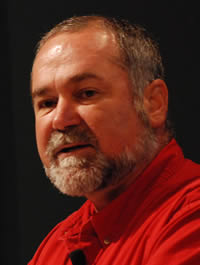
ROBERT STEELE: In 1997 Admiral Tom Stefans, USN agreed that CINCSOC, then General Peter Schoomaker, needed to hear what I had to say on Open Source Intelligence (OSINT). It took CINCSOC less than five minutes (half the ten minute briefing) to get it — he turned to his Deputy and said “I want this taught in every SOF schoolhouse, and a branch started in the J-2 (J-23, still in existence today).” And so it was. But I lost the big battles with CIA and DIA earnestly gutting the concept and settling for OSIF Lite. NATO also settled for OSIF Lite. Now we have a new set of flags, a whole new generation of leaders, and most of them seem more like General Schoomaker and General Tony Zinni, USMC — the exceptions of their time — and less like the careerists whose lack of intelligence with integrity has gotten us so deeply into a giant cesspool of our own making.
Here is what is happening today: NATO and the OAS are fighting for their existence. The BRICS are coming on strong with their own financial system, their own development financing and infrstructure construction system, and their own C4I system, not least of which is an alternative to SWIFT that is also impervious to NSA's ham-fisted (“we like lazy but expensive”) methods. In the past six years or so, CENTCOM has begun to realize that DoD C4I is so far down in the toilet as to not be worth the effort to clear, but they have not made the leap — as the NATO Allied Transformation Command (ACT) has made the leap — to understanding that in the 21st Century, traditional command & control is largely dead, and Alternative C2 is the main show. White SOF has very little power, very little money, and is a bit short on strategic vision right now, but CINCSOC is on the right path — returning to by, with, and through indigenous personnel. Where CINCSOC and his staff fall short right now is with respect to understanding that all eight tribes have to be harnessed, and that the C4I that does the harnessing has to look and feel and ideally be identical to that being used by the indigenous personnel, generally at their own expense. I am referring to cell phones. SOF is always going to need some special applications including invisible encryption and geospatial masking, but by and large, what SOF really needs is a dual use commercial network that is totally inter-operable with what the rest of the world is buying one instrument at a time.
I am reminded as I write this of General William Boykin and his book Never Surrender: A Soldier's Journey to the Crossroads of Faith and Freedom (Faithwords, 2011). Below is an extract of my review of General Boykin's book as posted at Amazon:
Charlie Beckwith, whose book Delta Force: The Army's Elite Counterterrorist Unit I really enjoyed, especially the part where he refused to leave a British field hospital for an American one, learned from the SAS the most important lesson it had to teach, and brought it to DELTA: to be *truly* unconventional, to be *truly* irregular, you must be UNMILITARY. From this page (69) I simply relaxed and enjoyed a great account. I got what I was looking for, sooner than expected.
Most flag officers serving with SOF, and most SOF acquisition managers, have never really gotten that “special” means unmilitary, it does not mean more expensive esoteric toys for boys — indeed the best possible investments for SOF are those that can go anywhere without detection, and provide military functionality in an unmilitary package.

The other problem that CINCSOC has, and I do not have the impression there is anyone pushing this issue to the head of the table, is that the SOF “spearhead” is an empty token when mounted on a broken shaft — a “shredded spear.” Among CINCSOC's challenges are the plain fact that the Office of Management and Budget (OMB) does not manage; the US secret intelligence world refuses to provide holistic whole of government preventive intelligence, and there is no money allocated for peaceful preventive measures as called for in the article I ghost wrote in 1989 for General Al Gray, then Commandant of the Marine Corps, Global Intelligence Challenges. Along with my own 1990 Intelligence in the 1990′s – Six Challenges it remains the definitive forecast and the definitive indictment of how the US Government does national security — badly, expensively, with generally catastrophic results for all concerned less the bankers — something General Smedley Butler, USMC, denounced in his own way, with his book, War is a Racket (Feral House, 2003).
From where I sit, it is time for CINCSOC to get a grip on three realities:
01. Until there is an Open Source Agency (OSA) within the Executive Office of the President, and OMB has a Deputy Director for Management that is a manager rather than a green eye-shade pencil pusher, CINCSOC is living up to Henry Kissinger's damning, demeaning condemnation of military men as “dumb, stupid animals to be used” as pawns. As Jim Webb illuminated so well in Fields of Fire (Bantam, 2001), this is precisely how Kissinger and today's mini-mes of Kissinger — less well-educated, more prone to bluster — see the military. SOF is not a speed bump the way conventional Army in Europe was built, SOF is a water balloon, totally disposable with the bodies being discreetly left to rot in foreign fields, or buried under false pretenses here at home. I will never forgive Kissinger for undermining the Paris Peace talks such that 20,000 more US troops died before he settled for precisely the same terms four years later, but I am heartened to find that Daniel Ellsberg nailed Kissinger and the rest of the illiterates staffing the White House and Congress with this quote from his book, SECRETS: A Memoir of Vietnam and the Pentagon Papers (Penguin, 2003), as he lectured to Kissinger:
“The danger is, you'll become like a moron. You'll become incapable of learning from most people in the world, no matter how much experience they have in their particular areas that may be much greater than yours” [because of your blind faith in the value of your narrow and often incorrect secret information. P. 236].
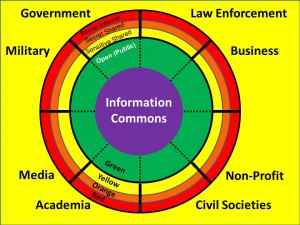
The fact is that Washington is full of virtual morons, careerists, and people who are sociopaths — they have lost all sense of conscience, duty, ethics, and honor. Washington is in enemy hands — Washington is vastly more dangerous to CINCSOC and the responsibilities and assets entrusted to his care including the most precious human assets — than any combination of enemies anywhere on the planet. Put simply, if SOCOM is to be built for the future, the foundation of that future must be an Open Source Agency that can provide whole of government full spectrum intelligence with integrity, and enable holistic honesty in federal governance, particularly as it pertains to rebalancing the instruments of national power (the Pentagon is generally 20 years behind the US Army's Strategic Studies Institute — this particular idea will emerge in the Pentagon around 2018). For SOF to be effective 10-20% of the time, the non-military and conventional military elements of government have to be functional — coherent, consistent, collaborative, creative — the other 80% of the time — not 80% dysfunctional and dishonest, which is what we have now.
See Also:
Intelligence for the President–AND Everyone Else, CounterPunch, Weekend Edition, February 27 – 1 March 2009
Fixing the White House and National Intelligence, International Journal of Intelligence and Counterintelligence, Spring 2010
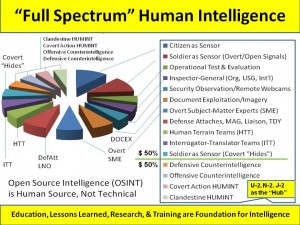
02. CINCSOC needs to get a better grip on Human Intelligence (HUMINT) inclusive of offensive and defensive counterintelligence. I have no direct knowledge, but everything I hear second and third hand suggests to me that SOCOMs access to expertise is pedestrian at best, and dangerously limited at worst. SOCOM does not know how to do citation analysis, how to methodically identify the top 100 published authorities, the top 50 unpublished authorities, the top 20 most relevant indigenous personnel based on their location, job, and past history. Neither does DIA, or CIA. There are eight tribes of intelligence, and fifteen slices of HUMINT. Until all of those can be managed intelligently and with integrity — with zero obstacles to going outside the “US citizen with clearances” idiocy zone — SOF may be special, but it will also be stupid. The existing approaches to HUMINT by CIA, DIA, DHS, and SOCOM are gravely flawed and should be discontinued. The center of gravity for SOF HUMINT is a 20 year program of mixed US and indigenous and third country circuit riders and long-term non-official cover residents not declared outside of SOC-X — people with PhD level linguistic, cultural, historical, and geospatial knowledge such as will never be acquired by any of the child analysts at CIA or over-fed retreads at DIA. I do give thanks to CIA and DoD for expeditiously clearing my monograph on HUMINT, written the night after I was interviewed for DISL HUMINT at DIA — now if we could get just one functional command to read it and achieve the critical mass possible with HUMINT, I would be a most contented patriot.
See Also:
2009 Perhaps We Should Have Shouted: A Twenty-Year Restrospective
2006 INFORMATION OPERATIONS: All Information in All Languages All the Time. Oakton, VA: OSS International Press.
2002 THE NEW CRAFT OF INTELLIGENCE: Personal, Public, & Political. Oakton, VA: OSS International Press.
2000 ON INTELLIGENCE: Spies and Secrecy in an Open World. Fairfax, VA: Armed Forces Communications and Electronics Association.
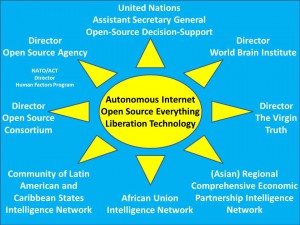
03 Finally, if I had ten minutes with CINCSOC, I would stress that by, with, and through is not just about countries, but about larger collectives of countries, among which I would list the EU, NATO, BRICS, and the three regional associations that properly exclude the USA from membership: the African Union (AU), the Community of Latin American and Caribbean States (CELAC), and in Asia the Regional Comprehensive Economic Partnership (RCEP). The EU just created an Emergency Response Centre and no one has noticed — the Chinese have created multinational intelligence and operations centres on the Mekong River and I believe in several other locations, and no one has noticed. The time has come for the EU and NATO to create an integrated Civil-Military Intelligence-Operations Centre and Network, and to invite the BRICS to create their own and/or collaborate in creating three multinational decision-support centres, one on the shores of the Mediterranean, another in South America, and the third in what I like to think of as “New Singapore,” the Indonesian island directly across from Singapore and ripe for conversion into a special economic zone that include a port for multinational maritime interdiction forces. I will mention in passing that this same concept integrates commercial capabilities., If the EU/NATO and the BRICS can agree, a United Nations Open-Source Decision-Support Information Network (UNODIN) could include a commercial Open Source Consortium similar to the MCC run by Admiral Inman, and The Virgin Truth, both focused on scaling free open source technology into the hands of the five billion poor, offering free cell access and free Internet access and free education via call centers and the diaspora, all toward the end of creating infinite wealth, a prosperous world at peace, a world that works for all. Only in this context can SOF be effective at both surgical precision killing, and equally surgical community engagement.
From where I sit, no one in Washington is capable of strategic thought. The pivot to Asia is ideological lunacy aggravated by wanton financial greed. Washington has no ability to balance means (revenue), ways (force structure), and ends (outcomes in the public interest as opposed to special interests). I believe the time has come for two specific flag officers —Admiral William H. McRaven at SOCOM and General Philip M. Breedlove at NATO — to agree on the above three fundamentals; to ask the Secretary of Defense to fund the Open Source Agency (ideally reporting to OMB DD/M but at least on the NDU campus in direct support of the regional centers), and within the OSA, as I have conceptualized for so long, full funding for at least one Multinational Decision-Support Centre (MDSC) that produces ethical evidence-based decision support across the ten high-level threats to humanity, the twelve core policies, and the eight demographics. Achieving 36o degree intelligence with integrity changes everything for the better. St.
See Also:



